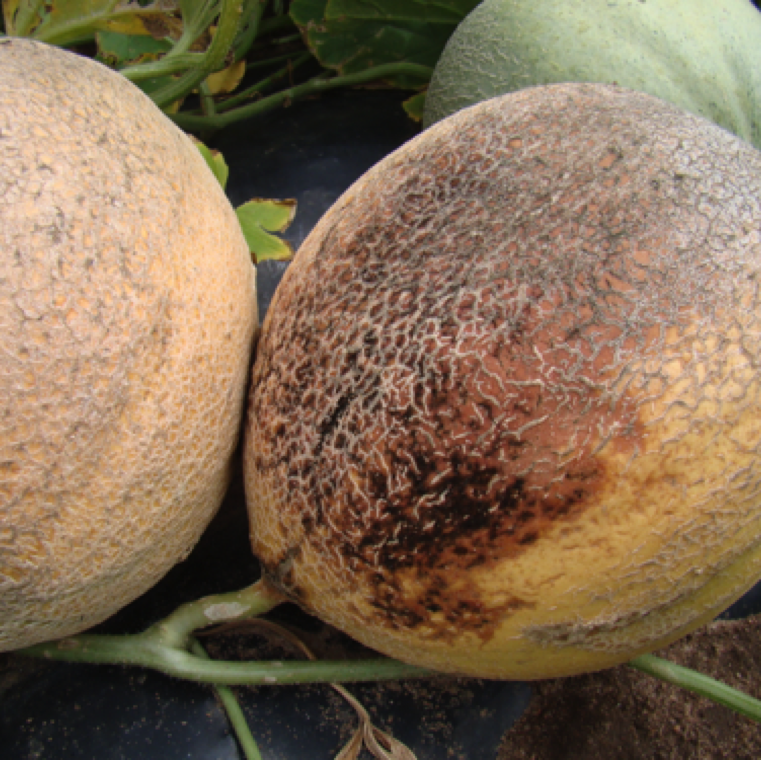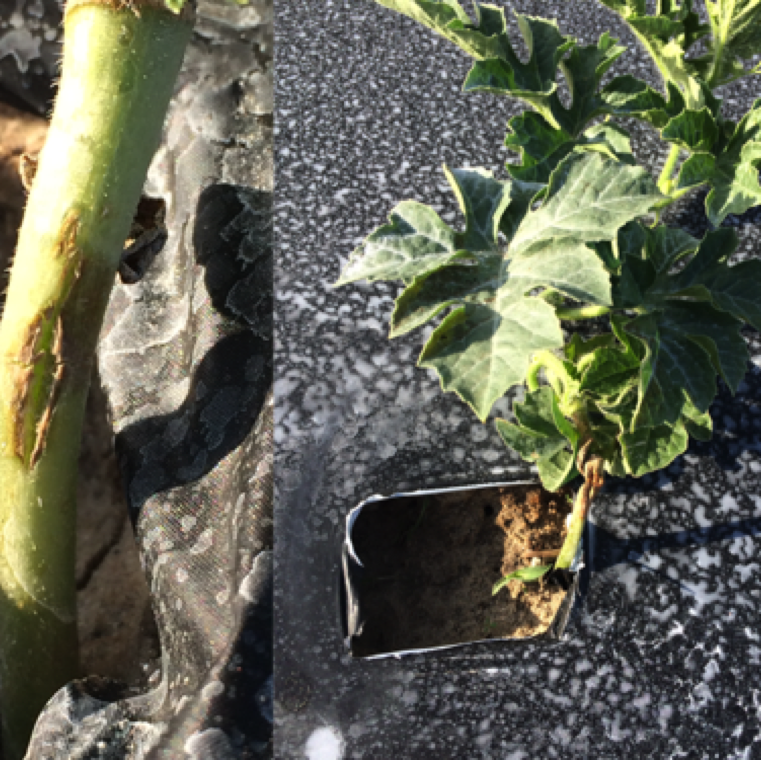


Alternaria leaf spot symptom starts as small circular leaf spots on older leaves on cantaloupe, cucumber and watermelon. The disease is not commonly seen on other cucurbits.
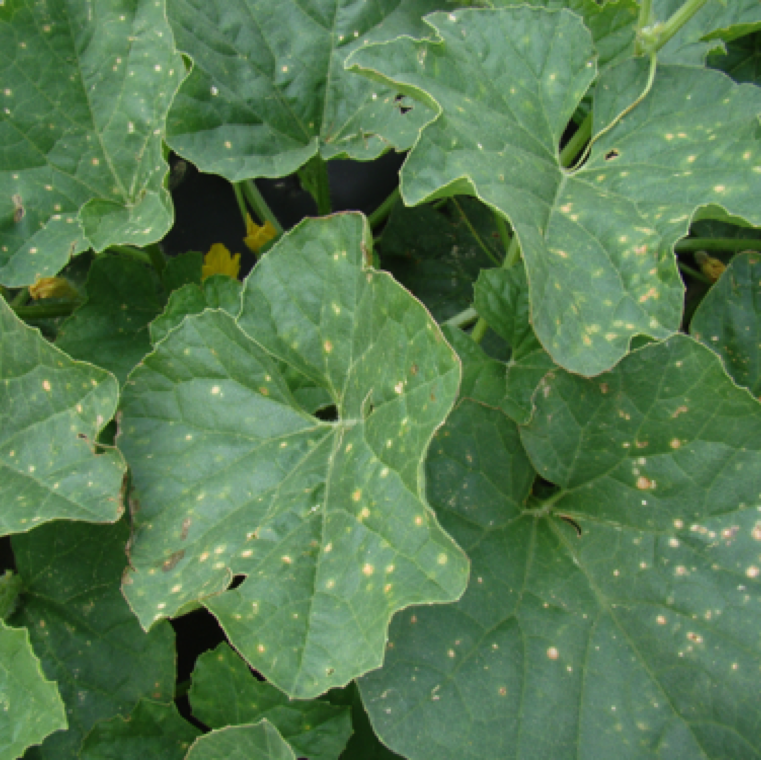
The leaf spots can be few to numerous that are spread throughout the leaves. The spots start as small yellow chlorotic lesions with a white or brown center.
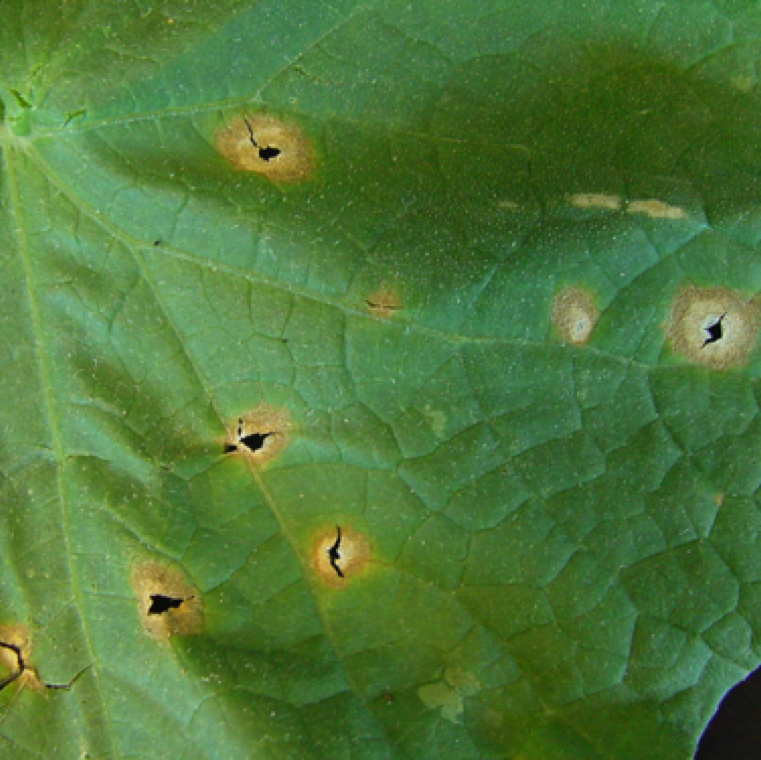
The spots can enlarge and the center of the spots may show a radial crack or break out after some time. The margin of the lesion tends to have a brown discoloration which creates a distinguishable outline.
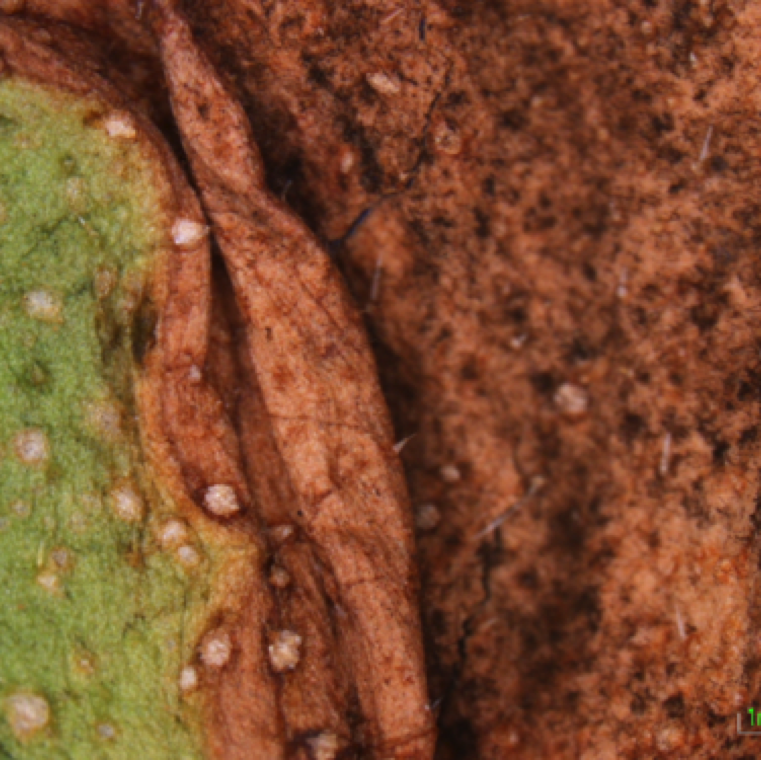
Leaf spot can lead to severe blighting under extreme infection. The spots may sometimes have a target-like appearance. The disease can cause premature defoliation, and yield loss.
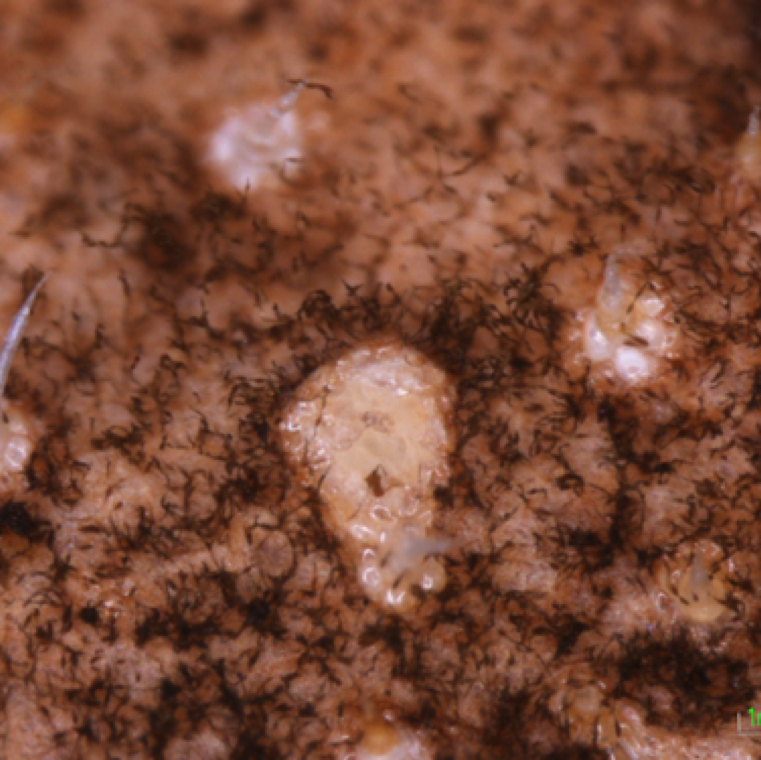
Alternaria spp. spores on a diseased leaf. Numerous black conidia (spores) and chains of spores can be seen on infected leaves around leaf hairs (trichomes).
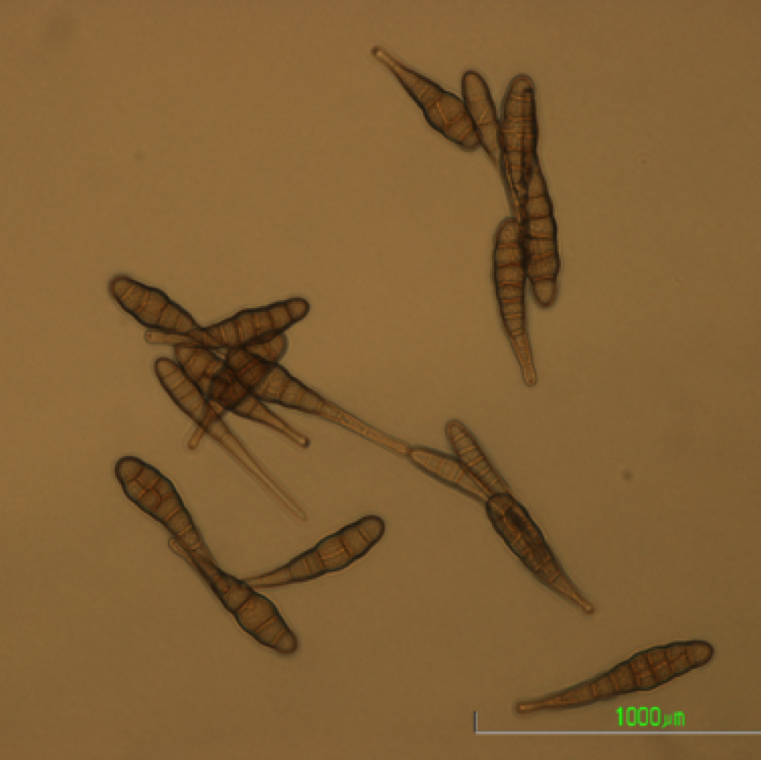
Numerous conidia of Alternaria spp. These are short beak conidia with longitudinal and transverse cross-walls. The spores can easily move in wind and spread the disease.
ALTERNARIA LEAF SPOT/BLIGHT
Fungal causal agent: Alternaria cucumerina (blight), Alternaria alternata f. sp. cucurbitae (spot)
Cucurbit diseases
